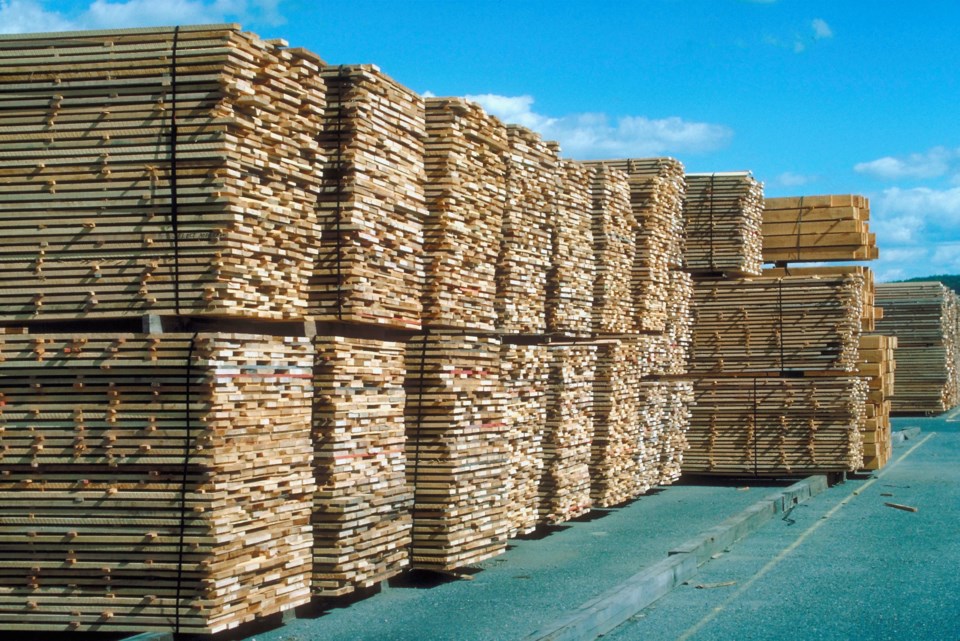The recent drop in lumber prices is coming as no surprise to at least one market analyst.
Keta Kosman, owner of Madison's Lumber Reporter, is attributing the decline to seasonal ebbs and flows related to house construction - indeed it's a sign that things could be getting back to normal after some two years of major volatility.
"Normally, at this time of year, prices would be getting softer because the large volume buying by the home builders is already done and they already received the wood that they would need for their projects coming up," Kosman said Tuesday.
As of Friday, the price per thousand board feet of benchmark Western Spruce Pine and Fir stood at US$660, less than half the US$1,400 it had hovered at during March and well down from more-than US$1,600 during June last year.
Conversely, the price still remains above the sub-US$400 seen for a decade since the 2008 economic downturn and all of 2019 and the first-half of 2020. Kosman doubts prices below that level will ever be seen again due to big increases to cost of production at sawmills and as more and more Millennials enter the house-buying age, particularly in the United States.
Instead, Kosman believes that after roughly two years of extreme ups and downs, the market is easing toward a new "balance of supply and demand."
"When the drop slows, when prices start to fall by less, I start to think that it's coming to where the new level is going to be," Kosman said.
She noted that the trend in prices during the final months of both 2021 and 2020, as illustrated by a graph on the Madison's website were a match as they rose from just above US$600 at the start of November to US$900-990 by the end of those years.
"This gives me a lot of confidence to say that we really are in the new normal," Kosman said.
Although the reigning price during the opening months of 2022 was significantly higher than during the same period in 2021, peaking at US$1,400 in March, compared to US$1,000 for the same period the year before, it's now also well below the level seen at the same time last year.
Kosman attributed the big jump at the start of 2022 to the November 2021 flooding and the one midway through 2021 to the wildfires that summer, both of which knocked out major transportation routes.
"These things really impact prices a lot," Kosman said. "The market is really sensitive to sudden changes in supply."
Trouble getting product to market has prompted Canfor to continue curtailments at its Western Canadian sawmills. First imposed at the start of April, the company said at the end of May that operations will remain at 80 per cent capacity throughout the summer.
During that period, two weeks of rotating downtime will be implements across its primary sawmills with the aim of resume normal operating schedules once summer is over, the company also said.
Once again, seasonal factors have come into play, according to Kosman. While they appear be making progress in getting lumber off their sites, Kosman said there are also fewer orders to fill.
"Normally, the prices will be getting softer through to Labour Day and in September there could be a bounce if the weather is good...the DIY and remodelling segment has a pop in activity because the prices are lower," Kosman said.
The "long slow slide" will continue through to American Thanksgiving in late-November before the market climb out of its low, aided by the large home builders making their purchases for the coming year.
Kosman sees the price rising back up to US$700 while the days of US$400 and lower are over.
"We have 15 years of Millenials entering first-time home-buyer age," Kosman said.



